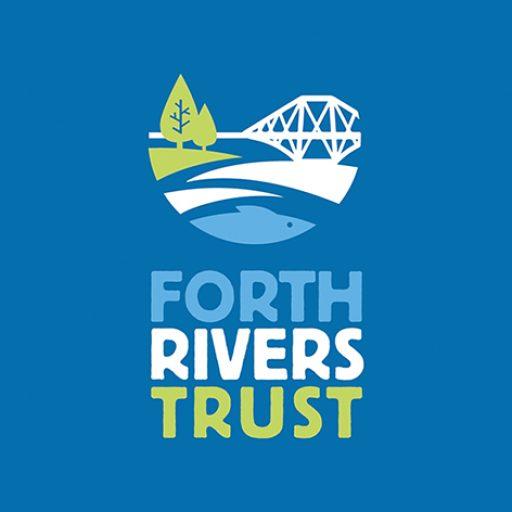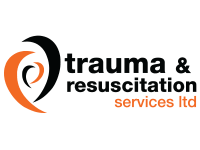SUP tour blog #2: Planning your adventure

Hello, welcome back to another SUP tour blog. My name is Jules, and this time we're going to continue to look at one of the fastest growing disciplines and interest areas in paddle boarding today; SUP, touring and exploring. In part two of this How To series we're going to dive in to……
In SUP Tour and Explore part one, we looked at what is SUP touring and exploring and how you can get involved. In this second part we're going to be talking you through planning your sup tour, helping you understand, choosing your locations, weather conditions, looking at safety considerations as well as potentially selecting overnight locations. All of that should help you get ready for SUP Touring for the very first time.
First off, you have to be realistic about your own and your paddle buddies ability. You don’t want to get out of your depth and put people off on day one! Aim to start with shorter distances and less challenging paddling conditions initially, you need to plan based on the average speed, you think you are able to sustain including breaks, but be realistic, all those stops that take a selfie and refuel on snacks and water, take time, and you don't want to be in a situation rushing to get home because you were too confident about how fast you can paddle. You want to spend your day enjoying the environment you're in and going on a real adventure. You or your group average speed will be affected by the board you're using, your ability, the water state (choppy or smooth), water movements; such as tidal river flow and the wind conditions. All of these might change during the day, affecting your overall distance you might be able to travel as a baseline.
It’s key to understand the average paddling pace you can achieve when you're out paddling. There's a number of different ways you can do this, such as timing yourself over a set distance, or you can use an activity tracker that you can download onto your smartphone (carried in one of our waterproof phone cases, or course) or use GPS watches. The Dry bags team here often try to plan our trips around three miles an hour, or 2.5 if we know we’re going to be having a more relaxed day and stopping more.
Knowing the weather conditions will also be key when you plan your route. Poor weather conditions will impact your average paddling speed and it’s not much fun being out in the rain and the wind all day. There are plenty of good online tools to help you forecast the localised weather. When planning we recommend the use of tools such as Magic Seaweed and Wind Guru, particularly for coastal weather the site gives wind, swell, general weather and tide all in one place. If you have a route that you want to do, you can look at the weather conditions, alongside it to understand if it's the right time to be doing it and crucially doing it safely in the time that you've got available.
You can also look at conditions and decide suitable routes to go when you have the available time to do it. A really great way to do that is simply plotting it into Google Earth, alongside your weather forecasting on your desktop computer. Another great tool we use is xc weather, as well as providing weather and wind forecasts, it can be used for live weather readings, you can check the forecast against actual conditions, which makes it really useful as a tool for just before you head out stop touring, to make sure the forecast has got it right, When planning around the weather conditions. As an initial assessment consider wind direction and strength. Water movements speeds and direction as well as general weather conditions for your initial assessment of if it's going to make your route possible. Secondly, and often an oversight, is to look at geographic features that might make those weather conditions, and water flow conditions more locally enhanced or reduced. As an example, looking at features such as valleys that might make when funnel, an increase in speed or features such as high cliffs that cannot be sheltered from the wind might make paddling, more or less possible, in those particular conditions for the day.
Your planning phase will prepare you as much as possible for the challenges you might face on your route. But remember, plans change. And you need to be looking at the conditions or altering your plans dynamically as the day's weather unfolds. Don't forget that weather forecasts are a forecast. They're just predictions of what they think might happen. And there's a lot of very local effects that can really change what those weather forecasts actually say. Don't forget to also consider using marine charts and Ordnance Survey maps to help you plan your route. Different types of map, give you lots of different types of information which will help you enjoy your paddle, as much as possible, and stay safe when conditions are often the biggest limit to paddle board routes.
The ability of yourself, or your group's paddling ability will determine where you can go on your planned route for the given weather conditions. It's key to remember that sup touring will take you somewhere new, or around the corner a bit further than you had before. As you will experience different conditions from where you started, you might end up having to paddle into the wind, across the wind or perhaps downwind, you might experience less stable water conditions when paddling where you're going.
Think about the what ifs and how conditions might vary from the familiar and be realistic about whether your paddling ability is up to it, and if it's safe to head out onto your planned route these unknown shouldn't discourage you from going Satori understanding the potential unknowns, and thinking about what different conditions to expect will make sure you can successfully and safely. Stretch your own comfort zone.
The next step in your planning should be to consider access points and exit points. It's often actually an oversight but many waterways have access restrictions, particularly canals, lakes and rivers, and you need to be aware of where you can and can't, and your panel from, as well as you can and can't stop during your reign. Firstly, access to water is sometimes restricted to having a permit or licence, do your research before we set out to ensure that you don't break any rules and upset anybody. There are also areas of private land along many waterways and coastal areas. So be aware of this when you're planning and do a little bit of research to avoid any problems with land angry landowners in other places, geographic features often cause access restrictions such as high cliffs or high riverbanks, or perhaps surf breaking onto the coast. I learned the problems of cliffs on a paddle around Cornish coast line, we had, we had long stretches with no exit points to rest. This wasn't a problem because we'd chosen to paddle in calm conditions, and we could rest and refill on our boards, but if you hadn't expected it on your trip, it might come as a surprise and make your day less enjoyable, from a safety point of view it's rarely sensible to look at the room, and understand the mountains the exit points you have available to you if something does go wrong. Therefore, you need to know where you can get out of the water, if you had to, but perhaps just as important is that you will know the sections of your paddle that you're restricted to staying afloat. This ensures you can plan stops on land with these exit restrictions in mind. After all, no one wants to have to do just-one-more-mile before you start to then find out there's nowhere to stop for another 10!
Of course you can't plan for everything. As the resources that you have available to you, and not substitute to being on location. Some planning is better than no planning. If you're looking to achieve a longer sup touring goal, as part of your planning, you can always paddle parts of the route. This will give you valuable insight into what to expect when you attempt linking multiple sections together.
If you're planning an overnight sub touring trip. You need to plan to find suitable camping or accommodation locations. There might be access restrictions and wild camping restrictions, and there may only be limited official campsites on your route. If you are planning on having four walls around you when you sleep, you need to make sure that you can get to your planned accommodation in the time that you have. So, it can be a little bit less flexible.
If you're camping you might need to consider things such as making sure the location is well above the high tide line and will offer you shelter from the weather over the time period that you're going to be there, as well as giving you access to any natural resources, such as food, water, and perhaps fuel should you choose to build a fire.
A bivy offers you more flexibility to where you can sleep less space is needed than the traditional tent. It's not as comfortable, but they do give you the ability to camp up in some much smaller harder to get to locations and can really add to adventure. Again, use Google Earth or satellite view map, as well as street view to scope out your adventure virtually. It's a really brilliant tool that I've used many occasions when I'm planning my SUP touring adventures.
Now one of the things I really like about inflatable paddle boards, is that they offer you the fantastic opportunity for one way trip adventures, perhaps paddling down a river and returning by train, taxi or bus. It does need an element of additional planning to make sure that the tides, the weather and the train times or the bus times work for the day that you're going, and of course you don't really want to miss that last train home and have an unexpected night away.
These one way trips can be a great way to plan routes when the weather isn't favourable for instance to avoid a difficult return paddle into the wind, or perhaps tidal flow.
When you've planned your SUP tour and exploring route, and prior to leaving, be sure to tell someone your plan. Let them know your destination. An estimated arrival time and updating them when your plan changes are very sensible thing to do is to perhaps use some of the live trackers on your smart phone (which is safely stored in a waterproof phone bag). The benefit of live trackers, is that they allow your safety contacts to see where you are checking on you, and if there is something wrong, they can raise the alarm.
Your route planning will also help you understand the kit, you need to take, from board and paddle, to safety and dry bags. We're going to look at much more about what you need to take on your sub tour and exploring adventure next time, so stay tuned for that!















